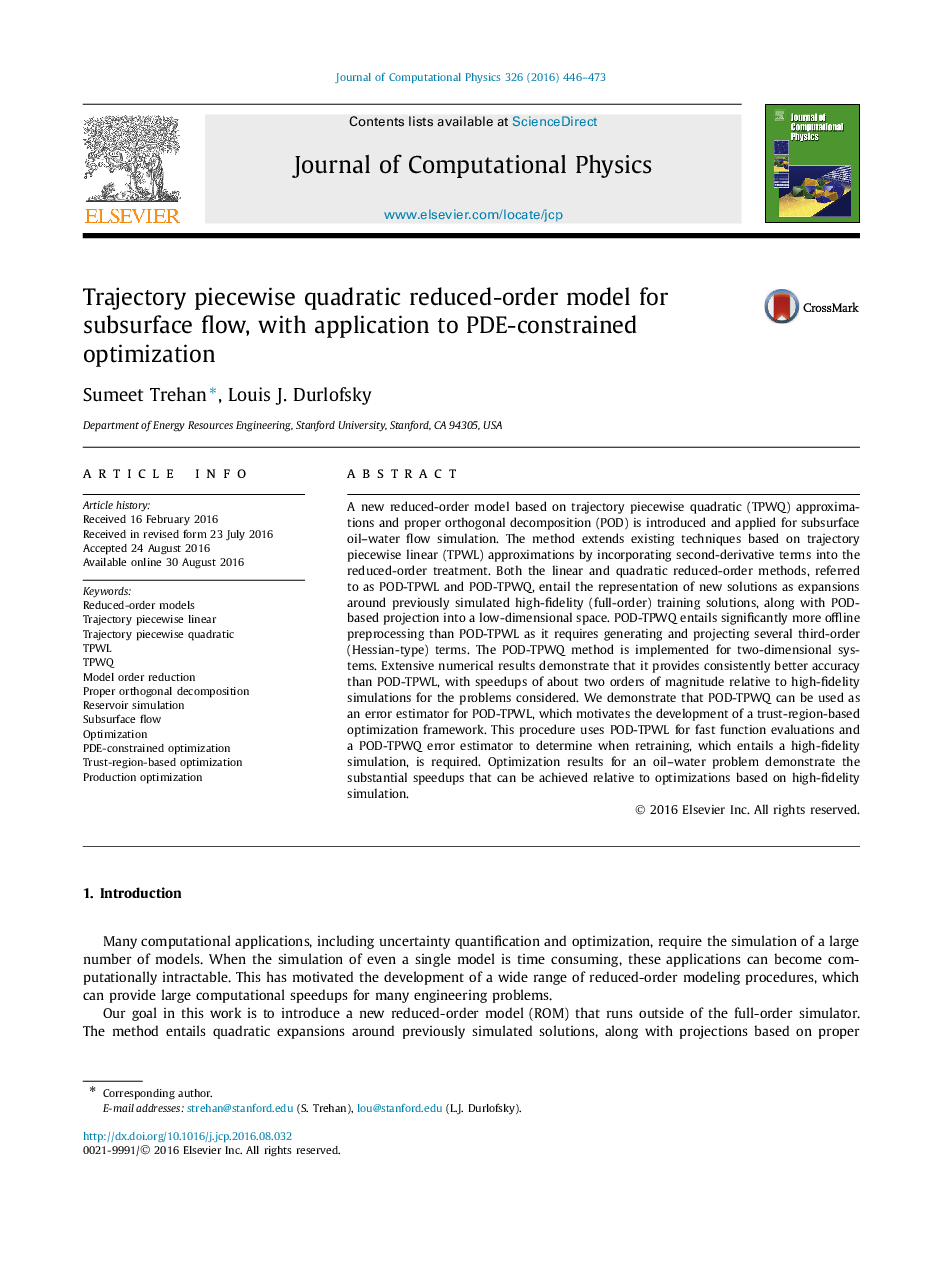| کد مقاله | کد نشریه | سال انتشار | مقاله انگلیسی | نسخه تمام متن |
|---|---|---|---|---|
| 4967865 | 1449387 | 2016 | 28 صفحه PDF | دانلود رایگان |
عنوان انگلیسی مقاله ISI
Trajectory piecewise quadratic reduced-order model for subsurface flow, with application to PDE-constrained optimization
دانلود مقاله + سفارش ترجمه
دانلود مقاله ISI انگلیسی
رایگان برای ایرانیان
کلمات کلیدی
PDE-constrained optimization - PDE محدودیت بهینه سازیOptimization - بهينه سازيproduction optimization - بهینه سازی تولیدProper orthogonal decomposition - تجزیه متعامد سرهSubsurface flow - جریان زیرزمینیReservoir simulation - شبیه سازی مخزنReduced-Order Models - مدل های کاهش سفارشModel Order Reduction - کاهش سفارش مدل
موضوعات مرتبط
مهندسی و علوم پایه
مهندسی کامپیوتر
نرم افزارهای علوم کامپیوتر
پیش نمایش صفحه اول مقاله

چکیده انگلیسی
A new reduced-order model based on trajectory piecewise quadratic (TPWQ) approximations and proper orthogonal decomposition (POD) is introduced and applied for subsurface oil-water flow simulation. The method extends existing techniques based on trajectory piecewise linear (TPWL) approximations by incorporating second-derivative terms into the reduced-order treatment. Both the linear and quadratic reduced-order methods, referred to as POD-TPWL and POD-TPWQ, entail the representation of new solutions as expansions around previously simulated high-fidelity (full-order) training solutions, along with POD-based projection into a low-dimensional space. POD-TPWQ entails significantly more offline preprocessing than POD-TPWL as it requires generating and projecting several third-order (Hessian-type) terms. The POD-TPWQ method is implemented for two-dimensional systems. Extensive numerical results demonstrate that it provides consistently better accuracy than POD-TPWL, with speedups of about two orders of magnitude relative to high-fidelity simulations for the problems considered. We demonstrate that POD-TPWQ can be used as an error estimator for POD-TPWL, which motivates the development of a trust-region-based optimization framework. This procedure uses POD-TPWL for fast function evaluations and a POD-TPWQ error estimator to determine when retraining, which entails a high-fidelity simulation, is required. Optimization results for an oil-water problem demonstrate the substantial speedups that can be achieved relative to optimizations based on high-fidelity simulation.
ناشر
Database: Elsevier - ScienceDirect (ساینس دایرکت)
Journal: Journal of Computational Physics - Volume 326, 1 December 2016, Pages 446-473
Journal: Journal of Computational Physics - Volume 326, 1 December 2016, Pages 446-473
نویسندگان
Sumeet Trehan, Louis J. Durlofsky,